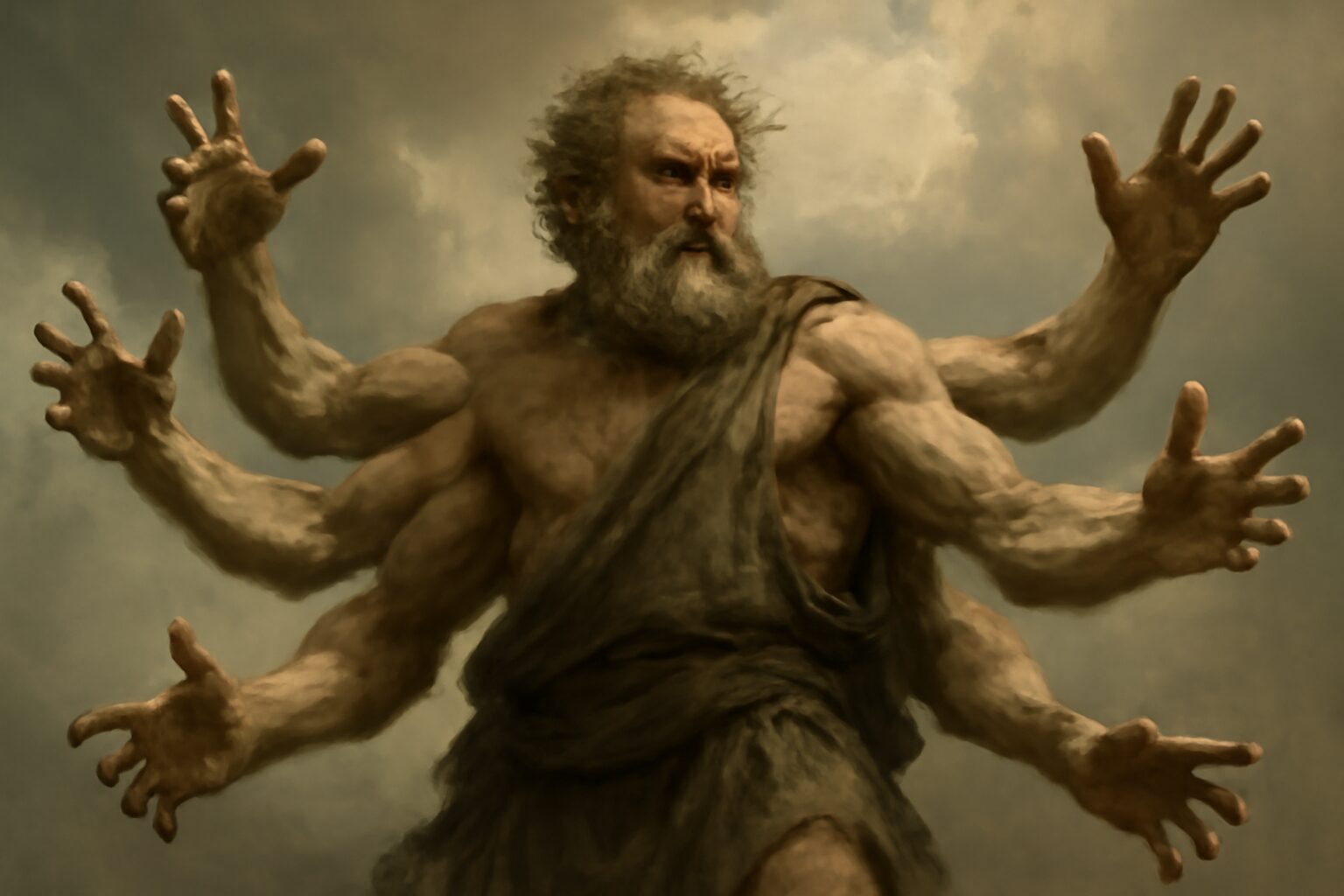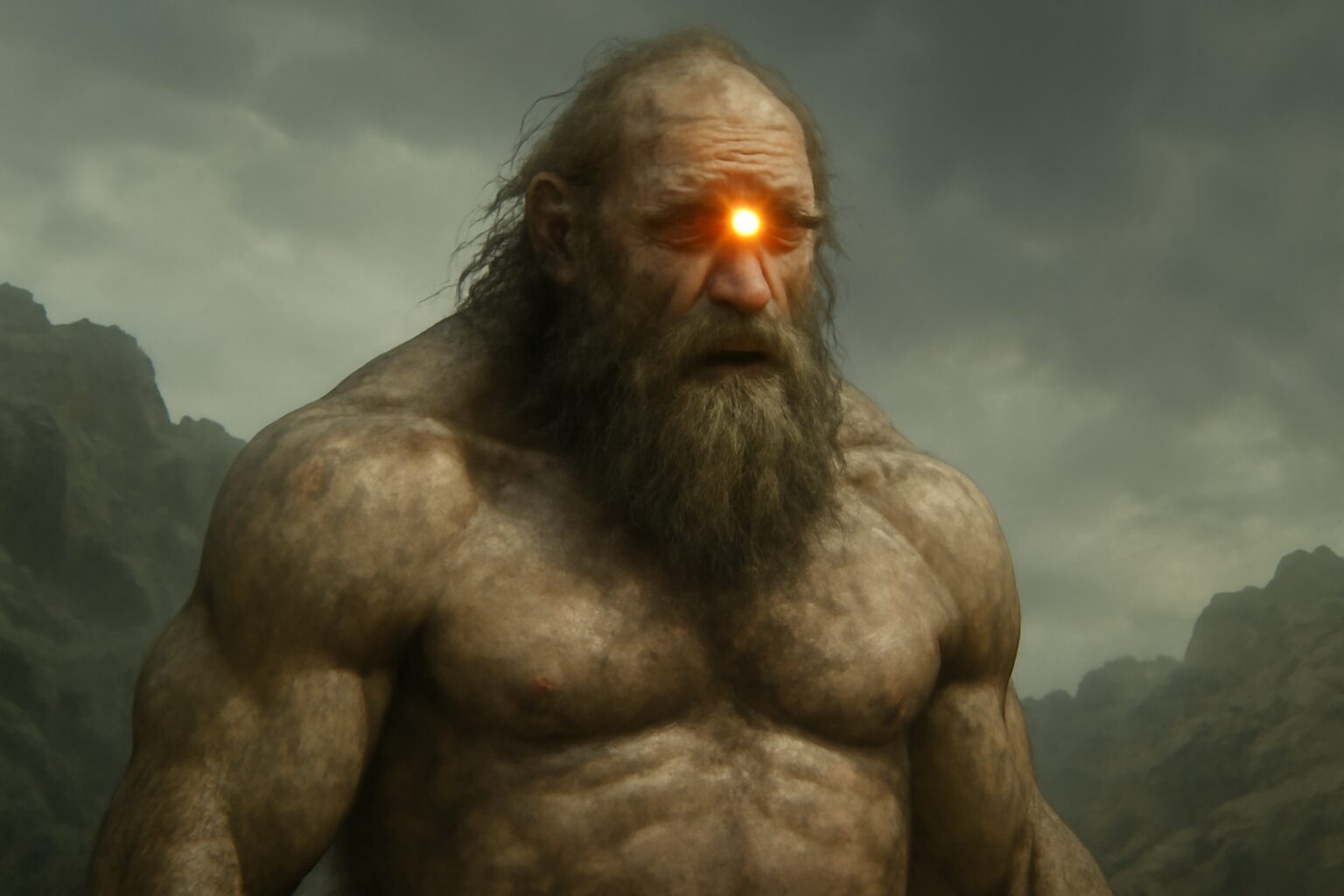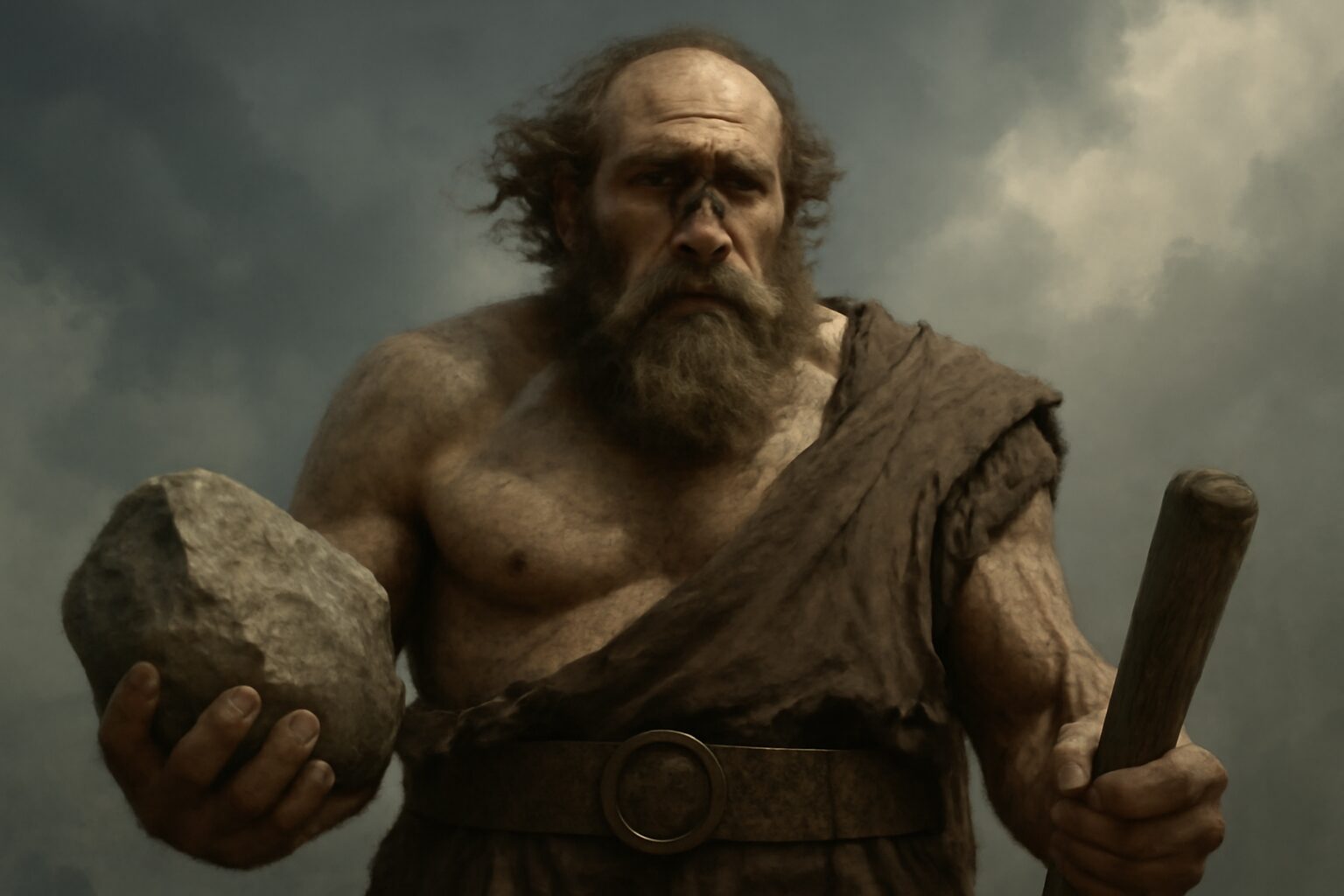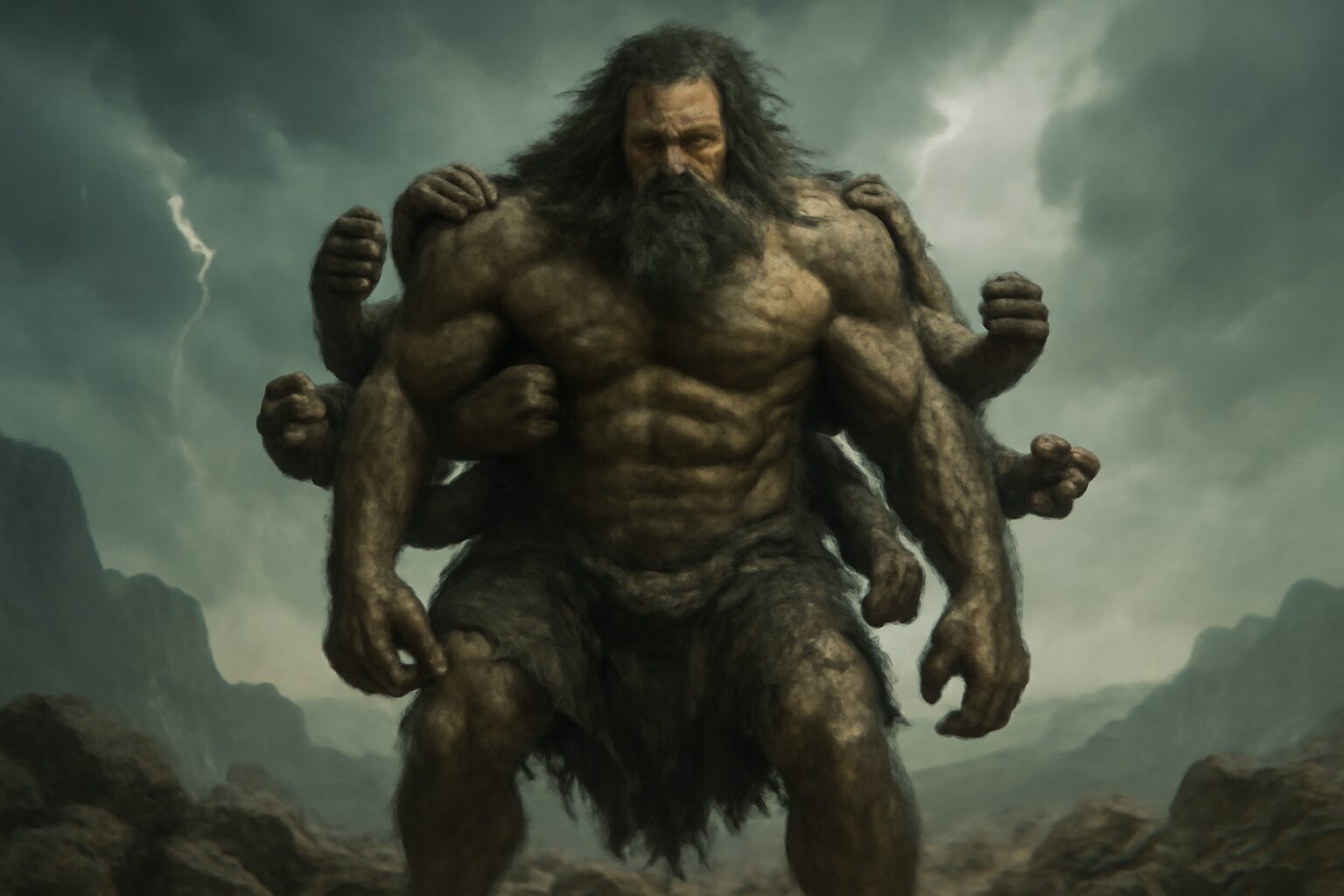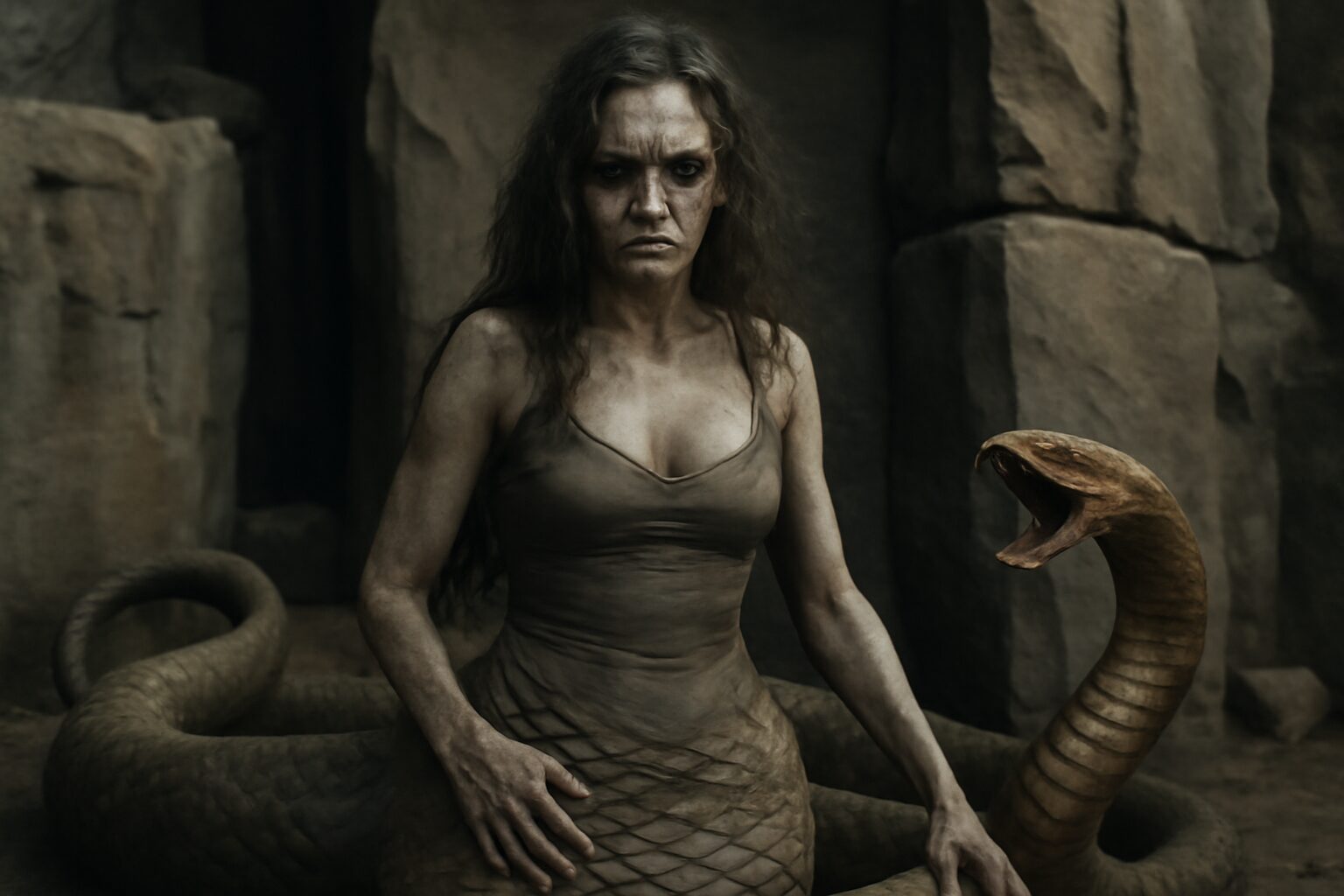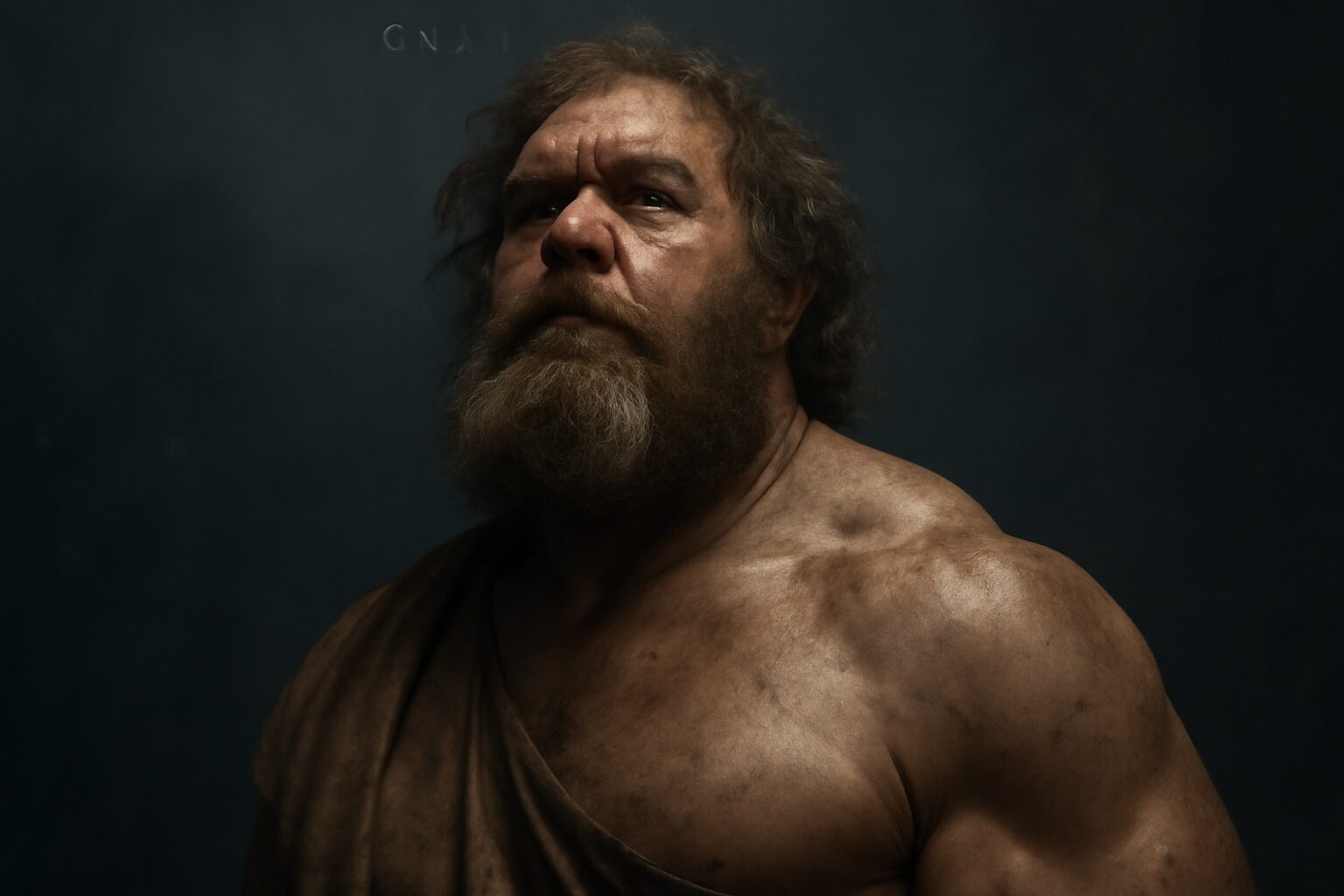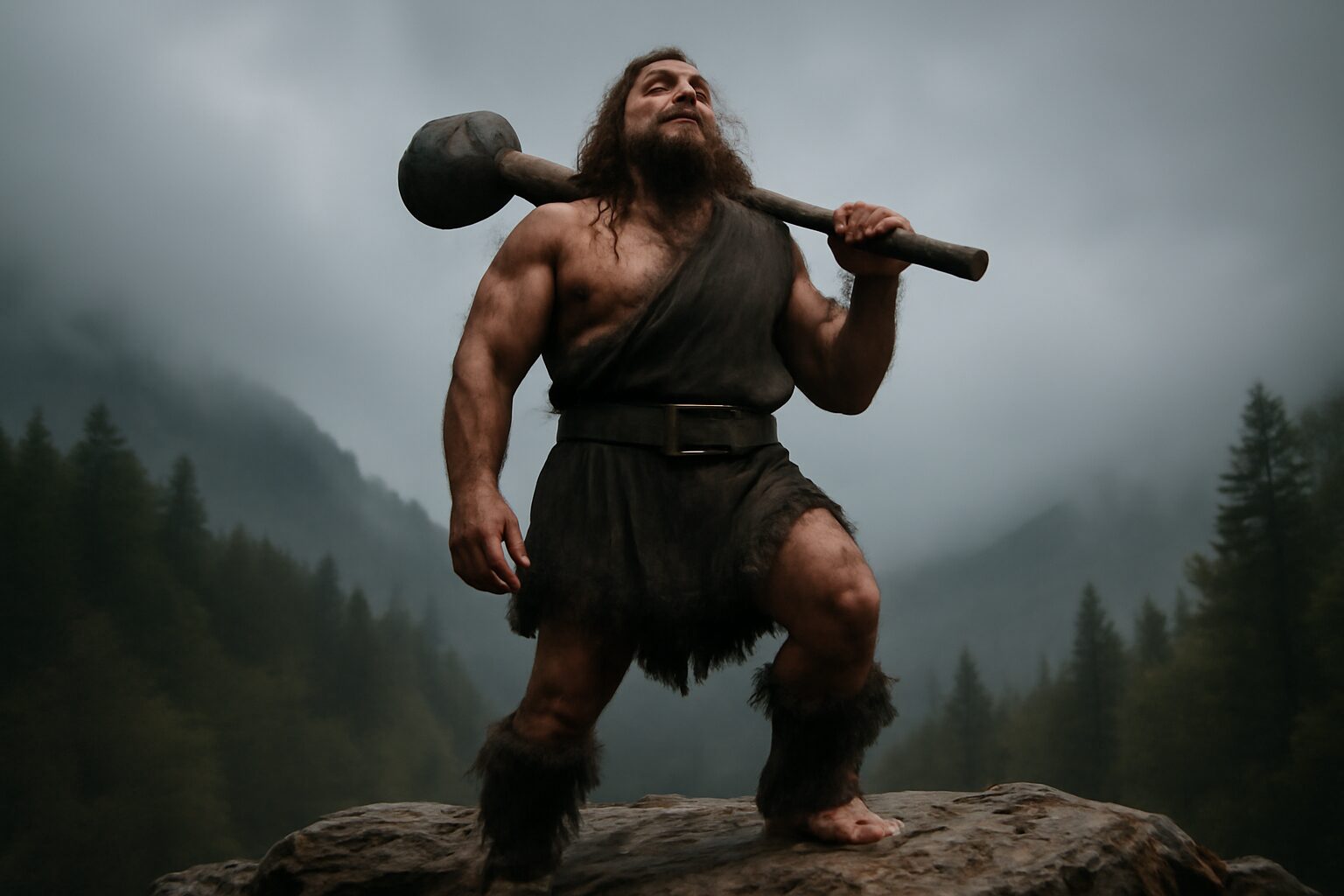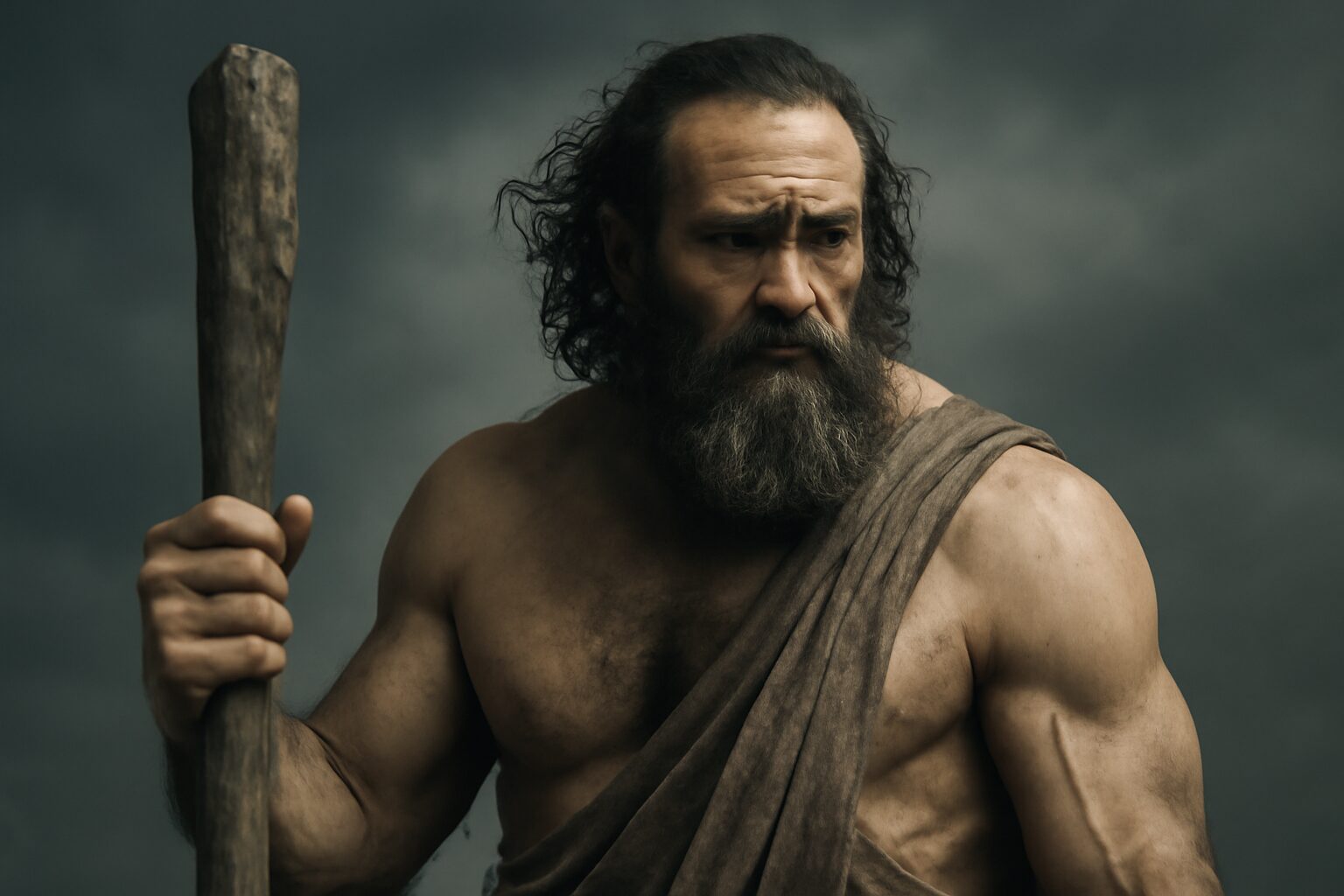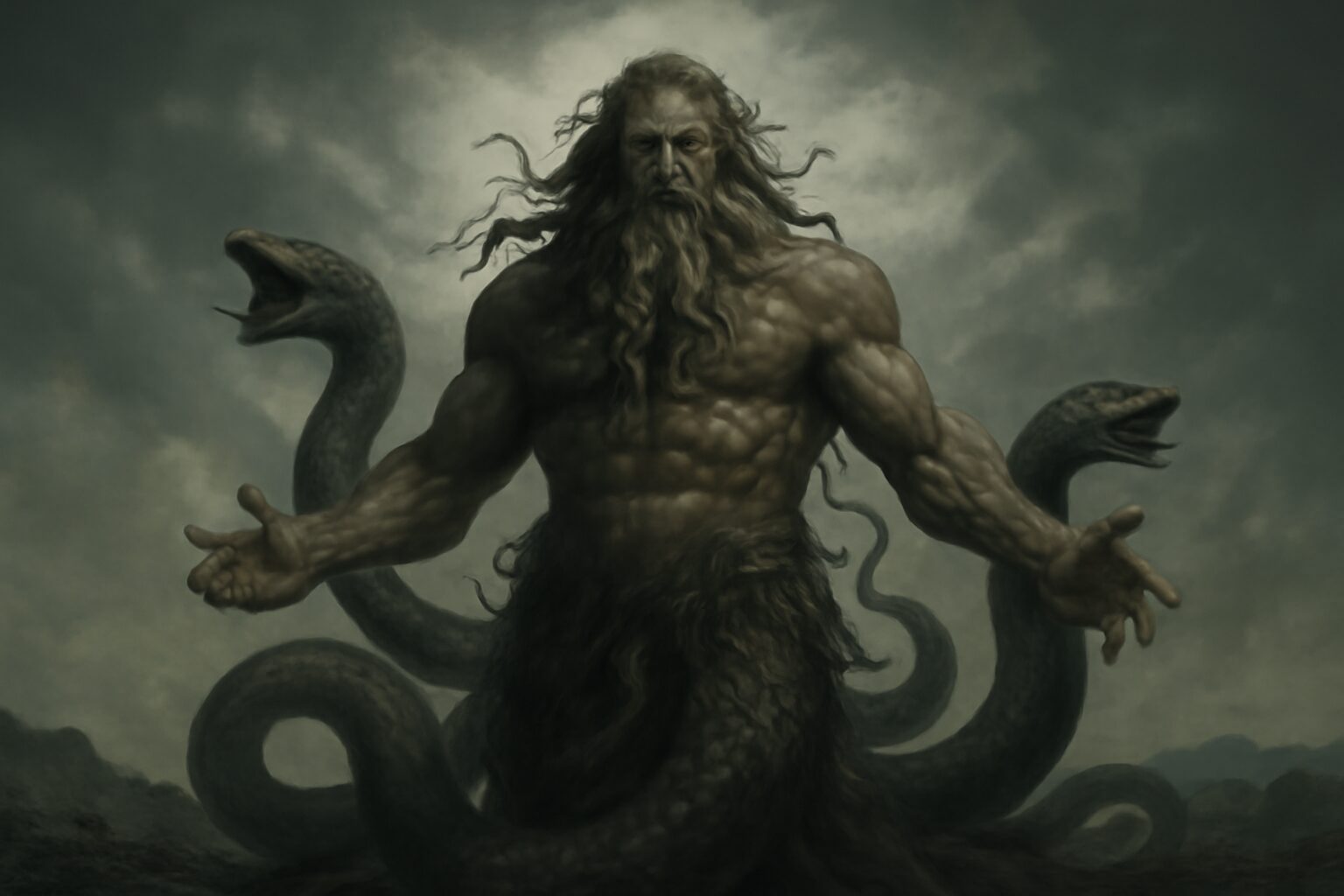Briareus: The Hundred-Handed Giant of Greek Mythology
Known by many names—Briareus to the gods and Aigaion to mortals—this colossal figure was one of the three Hekatoncheires, or "Hundred-Handed Ones," in Greek mythology. Born to the primordial deities Uranus (Sky) and Gaia (Earth), Briareus and his brothers, Cottus and Gyges, were fearsome beings with fifty heads and one hundred arms each, embodying the raw power of the natural world.
The Titanomachy and Briareus' Role
Initially imprisoned by Uranus, who feared their strength, Briareus and his brothers were later freed by Zeus during the Titanomachy, the great war between the Olympian gods and the Titans. Their unmatched might turned the tide of battle—Briareus alone could hurl hundreds of boulders at once, overwhelming the Titans and securing victory for Zeus and his siblings. As a reward, the Hekatoncheires were appointed guardians of the Titans imprisoned in Tartarus.
Powers and Significance
Briareus' hundred arms symbolized unstoppable force, making him a living weapon in divine conflicts. Unlike his monstrous appearance suggested, he was often portrayed as loyal and wise. In Homer’s Iliad, he is called upon by Thetis to mediate a dispute among the gods, showcasing his respected role as a peacekeeper despite his terrifying form.
Relationships with Gods and Mortals
Briareus had a unique bond with Poseidon, who (in some versions) gave him the name Aigaion and even married him to his daughter Cymopoleia, a sea nymph. This alliance reinforced his connection to the sea’s chaotic power. Mortals revered him as a protector against storms, invoking his name for safety at sea.
Though lesser-known than other Greek deities, Briareus remains a fascinating symbol of untamed strength and divine order, bridging the gap between the primal forces of nature and the structured rule of Olympus.
Alternative Names for Briareus (Aigaion)
God Name: Aigaion (Greek)
An alternative Greek name for Briareus, often associated with the Aegean Sea. The name Aigaion is derived from 'Aigaios,' meaning 'of the Aegean,' highlighting his connection to the sea.
God Name: Aegaeon (Roman)
The Romanized version of the Greek name Aigaion. It retains the same meaning and connection to the Aegean Sea as in Greek mythology.
God Name: Obriareus (Greek)
A variant spelling of Briareus found in some ancient Greek texts. The prefix 'Ob-' may be an archaic or poetic form, but the meaning remains closely tied to the original name.
God Name: Hekatoncheires (Greek)
A collective name for Briareus and his brothers (Cottus and Gyges), meaning 'Hundred-Handed Ones.' This name emphasizes their monstrous form with a hundred hands and fifty heads.
Tales about Briareus (Aigaion)
Briareus and the Titanomachy
During the great war between the Titans and the Olympians, Zeus found himself in dire straits. The Titans, led by Cronus, had bound Zeus and were poised to overthrow the fledgling Olympian order. In this moment of crisis, Briareus, the hundred-handed giant, was summoned by the clever Metis. With his immense strength and countless hands, Briareus swiftly untied the bonds that held Zeus, freeing the king of the gods. His intervention turned the tide of the Titanomachy, securing victory for the Olympians and earning Zeus's eternal gratitude.
The Aftermath and Reward
In gratitude for his crucial aid, Zeus granted Briareus a place of honor as a guardian of the gates of Tartarus, where the defeated Titans were imprisoned. Briareus stood watch alongside his brothers, Gyges and Cottus, ensuring that the Titans would never again threaten the cosmos. This alliance between the Hecatoncheires and the Olympians underscored the importance of Briareus's might in maintaining cosmic order.
Briareus and Thetis: The Olympian Rebellion
Years after the Titanomachy, a new threat emerged when several Olympian gods—Poseidon, Hera, and Athena—conspired to overthrow Zeus and bind him in chains. Learning of the plot, the sea nymph Thetis acted swiftly to protect the king of the gods. She raced to the depths of the ocean, where Briareus resided, and pleaded for his assistance. Moved by her urgency, Briareus ascended to Mount Olympus, his hundred arms bristling with power.
The Intimidating Presence
Briareus's sudden appearance at Zeus's side was enough to quell the rebellion. The conspiring gods, awestruck and fearful of the giant's formidable strength, abandoned their plans immediately. Briareus did not need to lift a hand in violence; his mere presence served as a potent deterrent. This event not only reaffirmed Zeus's supremacy but also highlighted Briareus's role as a peacekeeper among the gods, using his fearsome reputation to maintain stability on Olympus.
Frequently Asked Questions
Who is Briareus (Aigaion) in Greek mythology?
Briareus, also known as Aigaion, is one of the Hecatoncheires, or 'Hundred-Handed Ones,' in Greek mythology. He is a giant with a hundred arms and fifty heads, known for his immense strength. Briareus and his brothers helped Zeus in the Titanomachy, the war against the Titans, securing Zeus's victory and his place as king of the gods.
What are the Gigantes in Greek mythology?
The Gigantes, or Giants, are a race of enormous and powerful beings in Greek mythology, often depicted as warriors or monstrous figures. They were born from Gaia (Earth) and the blood of Uranus (Sky). The Gigantes fought against the Olympian gods in the Gigantomachy, a great battle symbolizing the struggle between order and chaos.
Why are figures like Briareus and the Gigantes important in Greek myths?
Figures like Briareus and the Gigantes represent primal forces of nature and chaos in Greek mythology. Their stories, such as the Titanomachy and Gigantomachy, highlight themes of power struggles, the overthrow of older deities, and the establishment of cosmic order under Zeus and the Olympians. These myths explain how the gods maintained their dominance.
What can we learn from the myths of Briareus and the Gigantes?
These myths teach lessons about resilience, teamwork, and the balance between order and chaos. Briareus's aid to Zeus shows the importance of alliances, while the Gigantomachy underscores the idea that even the mightiest forces can be overcome through strategy and unity. They also reflect ancient Greeks' attempts to explain natural and cosmic phenomena.
How do the stories of Briareus and the Gigantes apply today?
The tales of Briareus and the Gigantes resonate today as metaphors for overcoming challenges and maintaining balance in life. They remind us of the value of cooperation (like Briareus aiding Zeus) and the constant struggle between order and disorder, which can be seen in modern conflicts, leadership, and even personal growth.

